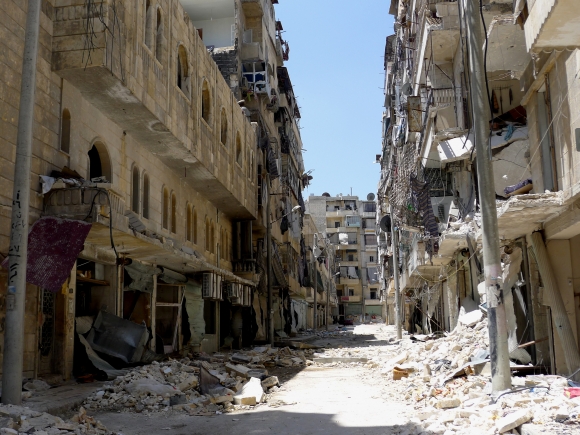When explosive weapons are used in populated areas their effects tend to be indiscriminate, with a staggering proportion of death and injuries inflicted on civilians. They often cause high levels of immediate and long-term harm to individuals and communities. The explosive blast and fragmentation kill and injure people in the area where they detonate, and damage objects, buildings and infrastructure. Victims and survivors of explosive weapons can face long-term challenges of disability, psychological harm, and social and economic exclusion. Destruction of infrastructure vital to the civilian population, including water and sanitation, housing, schools and hospitals, deprives civilians of access to basic necessities and results in a pattern of wider, long term suffering.

Street scene in Aleppo, from April 2013.
Both states and non-state actors use explosive violence. For most states, explosive weapons are tools of the military – they are not considered appropriate for use in law enforcement because of the risk they pose to the public. INEW promotes recognition that the use of explosive weapons by a state amongst its own population is a concrete indicator of a crisis unfolding. The use of IEDs in populated areas, often by non-state armed groups, is also a major cause of harm.
Although IEDs are used in attacks on military targets they are often used directly against civilian populations. Regardless of the political dynamics to these attacks, this pattern should be recognized as presenting a severe humanitarian problem.
